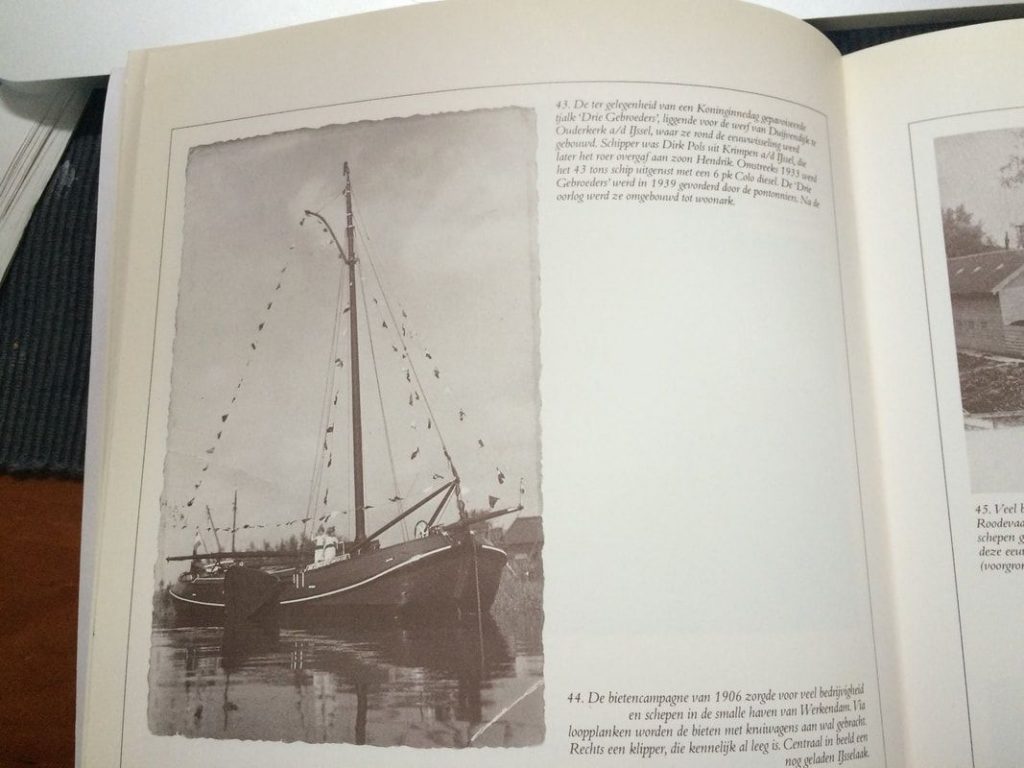
The Paviljoentjalk “Drie Gebroeders” (Three Brothers) was built In 1898, at the Van Duivendijk yard in Krimpen a/d Ijssel. This shipyard was one of the oldest shipyards in the Netherlands, part of a group that had been around since the 17th century, but sadly was sold by the municipality in 2002. This family of shipbuilders were renowned for their work and at one time had 35 yards.

The flag of Krimpen
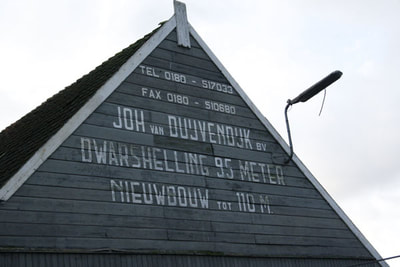
The first skipper aboard DG was owner Dirk Pols, a family man with a wife Christina (nee Kalkman) and a young family; three sons, Dirk, Hendrik and Pieter and a daughter called Neeltje. Hendrik, the middle son who was to take over later as skipper, was only 5 years old when his father took ownership of this working barge. The cargo in those days would most likely have been farm produce and manure, and the small area currently my engine room was the cramped living quarters for this family of six. A very small 6hp Colo diesel engine was added to the sailing vessel around 1933, with the original plans showing the adaption incorporating new living quarters, now the galley area. She now has a 62hp marinized BMC engine, the sort that could be used for a London taxicab!

By the outbreak of World War II, Dirk’s son Hendrik was skipper when the Dutch Army Pontonniers (road and bridge menders) requisitioned Drie Gebroeders. Records show that the German Army that subsequently occupied The Netherlands also rented her, for the sum of 26 Guelders per week. Close inspection of her forward hull and bow nowadays reveals signs that lead us to believe that she was adapted to become an ‘invasion barge’ by the Germans, for use in Operation Sealion along with every barge they could get. This left them with a severe shortage of cargo vessels to move essential materials and provisions around the continent.
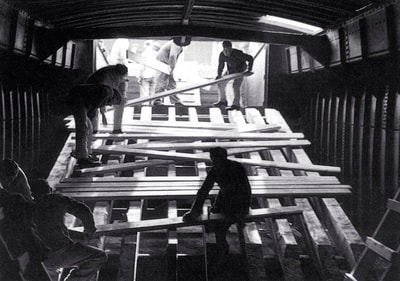
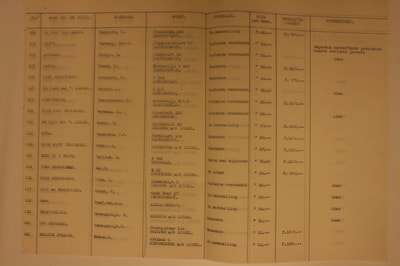
Register showing the hire of DG, by the German army, for 26 guelders per week
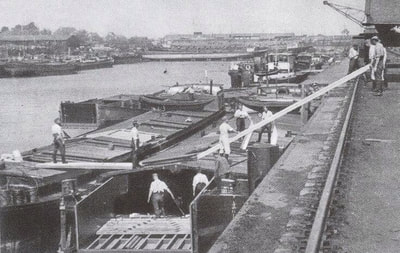
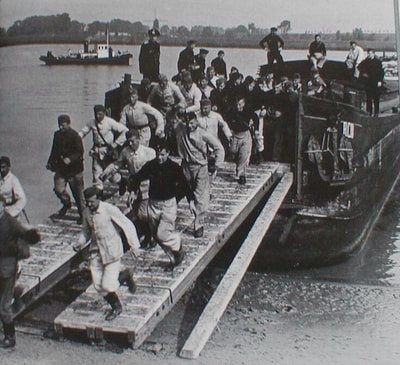
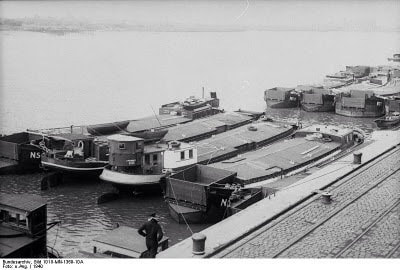
Heaven knows how she survived the War years, as river transport traffic was a prime target for the Royal Air Force fighter bombers and many such vessels were damaged beyond repair. After the war, many ships were sold by the professional skippers who were retiring or buying bigger vessels without any official registration so it is very difficult to trace ownership in that time.
So, it is not until the late 1990s that record of this little ship reappears. By then she was named Hermes and was found in Zaandam, a city in North Holland, in very bad condition and full of old, rusty iron. She was bought for use as a houseboat, but changed hands again in 2000 when her original name was reinstated and she appears once again on the Dutch Kadastre or register. The couple who can be thanked for her current form lived on her in a boatyard in Friesland for a year, while undertaking her restoration to a sailing ship. They then spent several years living on and sailing her in Friesland, often standing dry on the sandbanks of the Wadden at low tide. They even sailed to Belgium via the River Schelde from Antwerpen to Ghent and have many happy memories of these times. Sadly, ill health and the need for expensive repairs forced her sale to a young maritime engineer, who brought her to moor in Drimmelen, in the heart of the beautiful Biesbosch area of natural beauty.
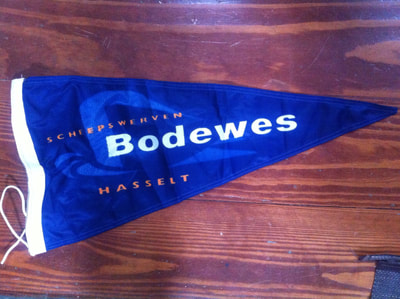
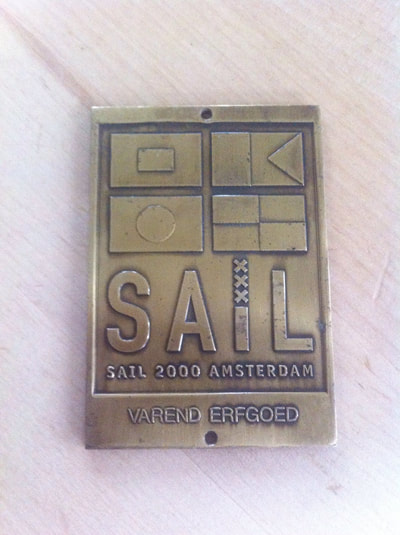
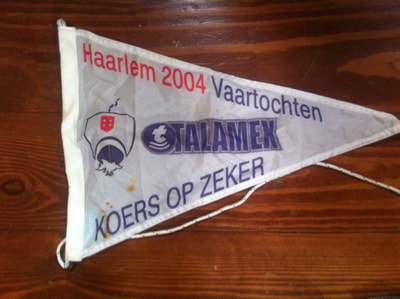
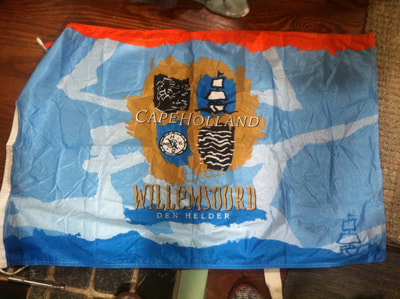
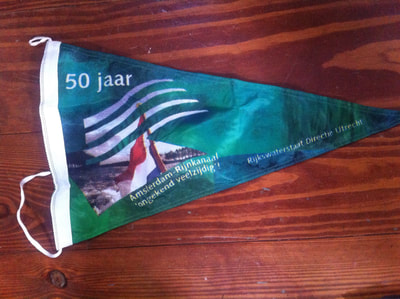
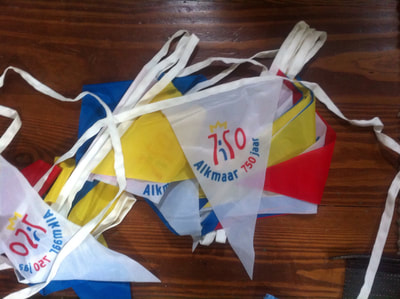
And so, it came about that I found her here, looking a little tired and weary and in need of some TLC. Knowing nothing of boats of any sort, I have come to love her and regard her as a very dear, elderly member of the family! I am just another custodian of this precious old vessel, but having lovingly restored and refurbished her inside and out, I look forward to spending many happy years with her before our time together comes to an end and she passes to her next fortunate owner.